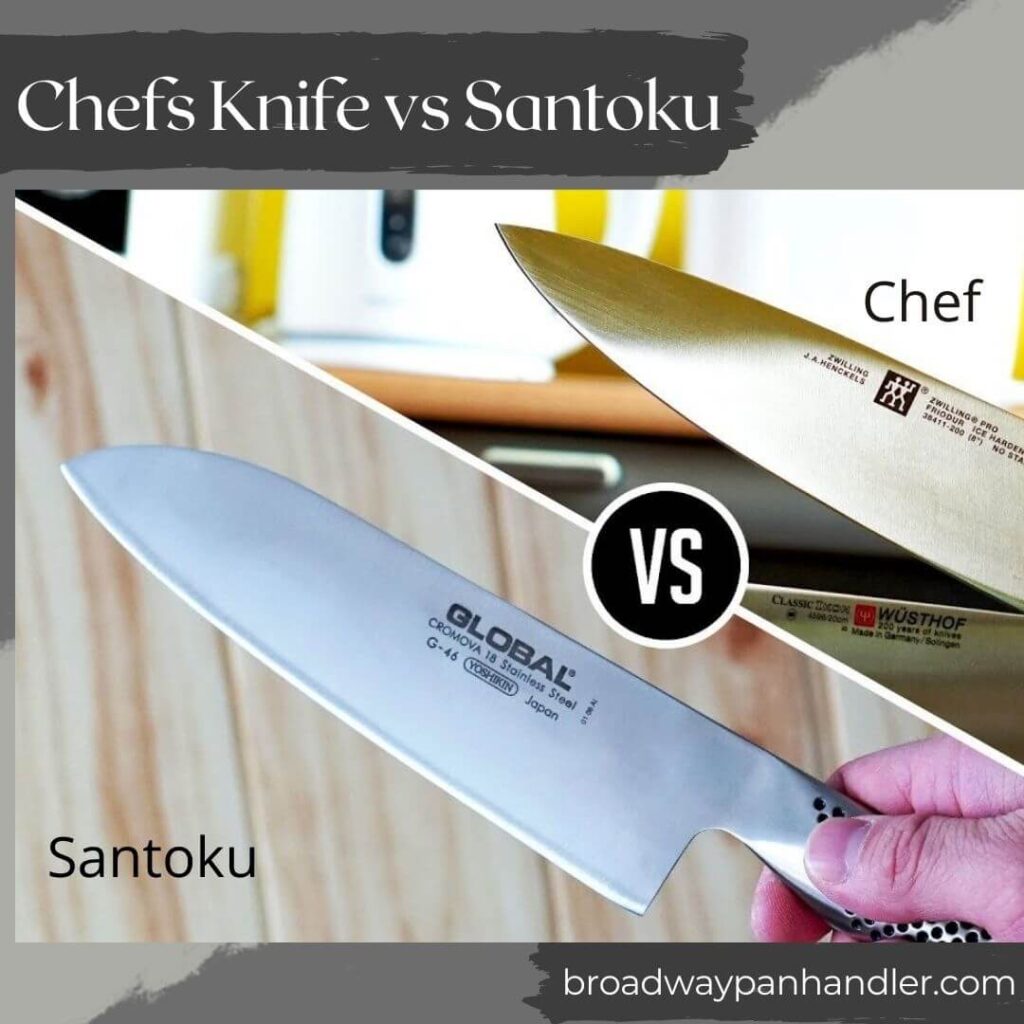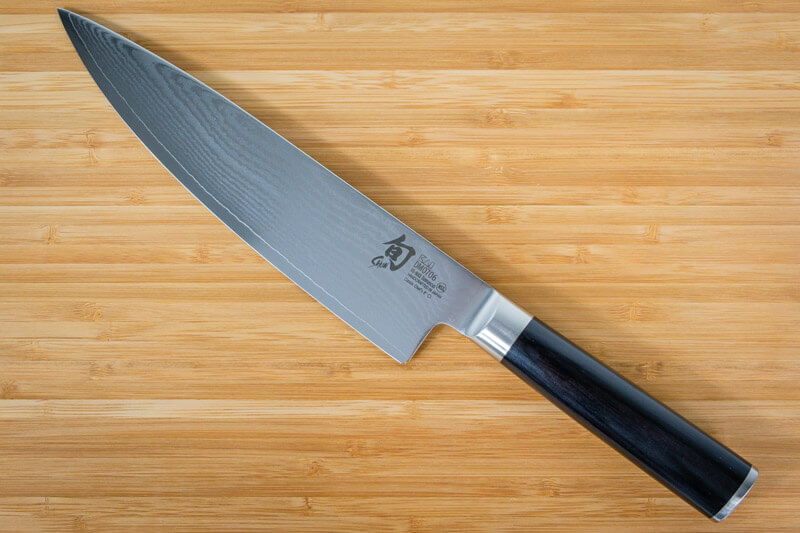To beginners and regular home cooks, a Santoku and Chef’s Knife appear to be very similar. However, there are a few important distinctions between each one. To be able to choose the most appropriate kitchen knife for your cutting needs, it is vital to understand these differences.

When I select a knife to use, I look at my magnetic knife strip, deciding which qualities I want for the task at hand. For instance, when slicing tomatoes, I want a sharp serrated edge that will glide through the produce. However, when I want to make clean, even slices, I reach for my chef’s knife.
For the most part, each piece of cutlery I own performs a specific task. When I shop for knives, I begin by thinking about what I need.
Chef’s Knife
Chef’s knives are designed to handle numerous tasks, working as your jack-of-all-trades cutlery. While specialty knives can handle specific tasks more efficiently, chef’s knives perform jobs like filleting fish, chopping vegetables, and producing uniform cuts thanks to intentional design.

Chef’s knives are long, ranging from 6 – to 10-inches. This allows you to complete tasks in which you drag your blade from heel to tip, such as filleting. Additionally, the blade is slightly curved, ending in a pointed tip.
Why is the curve important?
Because it allows you to rock the blade as you chop by grounding the tip and lifting the heel up and down. The rocking technique is fast and precise. Many chefs, professional and home, use their chef’s knives to complete much of their prep work.
Finally, chef’s knives have handles that are offset, making sure you don’t hit your knuckles when the heel is planted on your cutting board.
Santoku Knives
Santoku knives are also Jack-of-all-trades cutlery, but with a different design. The blade edge is slightly curved, but to a lesser degree than the chef’s knife and with a tip that is less pointed. The spine of the blade rounds down to produce a sort of flat nose, kind of like a vegetable chopper. These features make santoku blades ideal for chopping motions rather than rocking ones.

Santoku knives also have offset handles and are generally shorter, ranging from 5 to 7 inches. Many chefs like santoku knives because of their hollow edge, which includes indentations along the blade. The design reduces drag, making your blade glide through food as if it was butter.
Many chef knife brands also produce versions of the santoku knife, as well.
Difference Between Chef Knife and Santoku Knife
The main difference between a chef’s knife and a santoku knife is the design of the blade and tip of the knife. A chef knife is best for rocking and slicing, while a santoku knife is ideal for chopping quickly. Many cooks have both in their kitchen.
I like owning both because sometimes the best technique is rocking while other times it’s chopping.
In the end, it comes down to preference. If you use both cutting techniques, like I do, having both knife types on hand will make meal preparation a cinch.
Other helpful kitchen knife guides on Broadway Panhandler